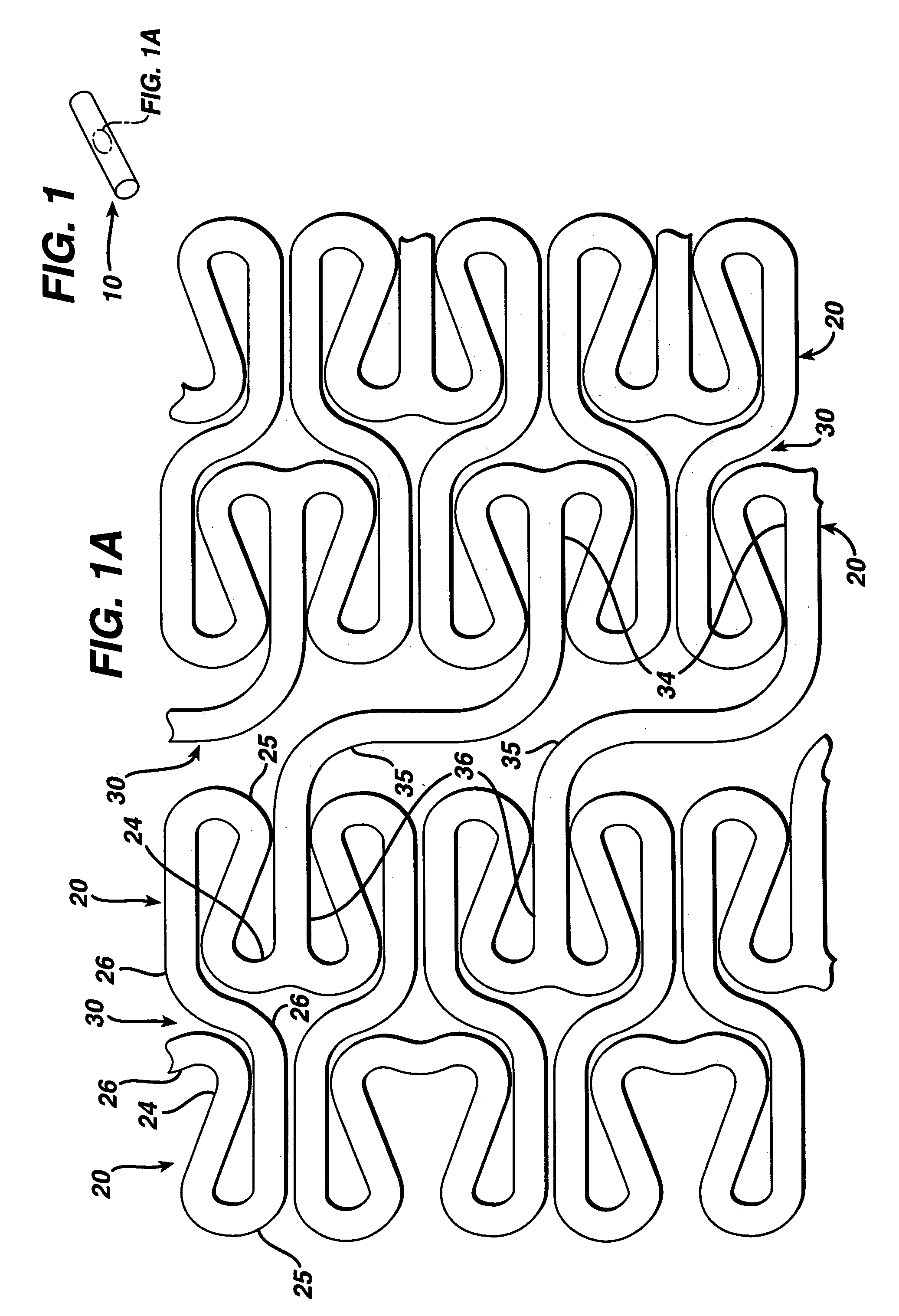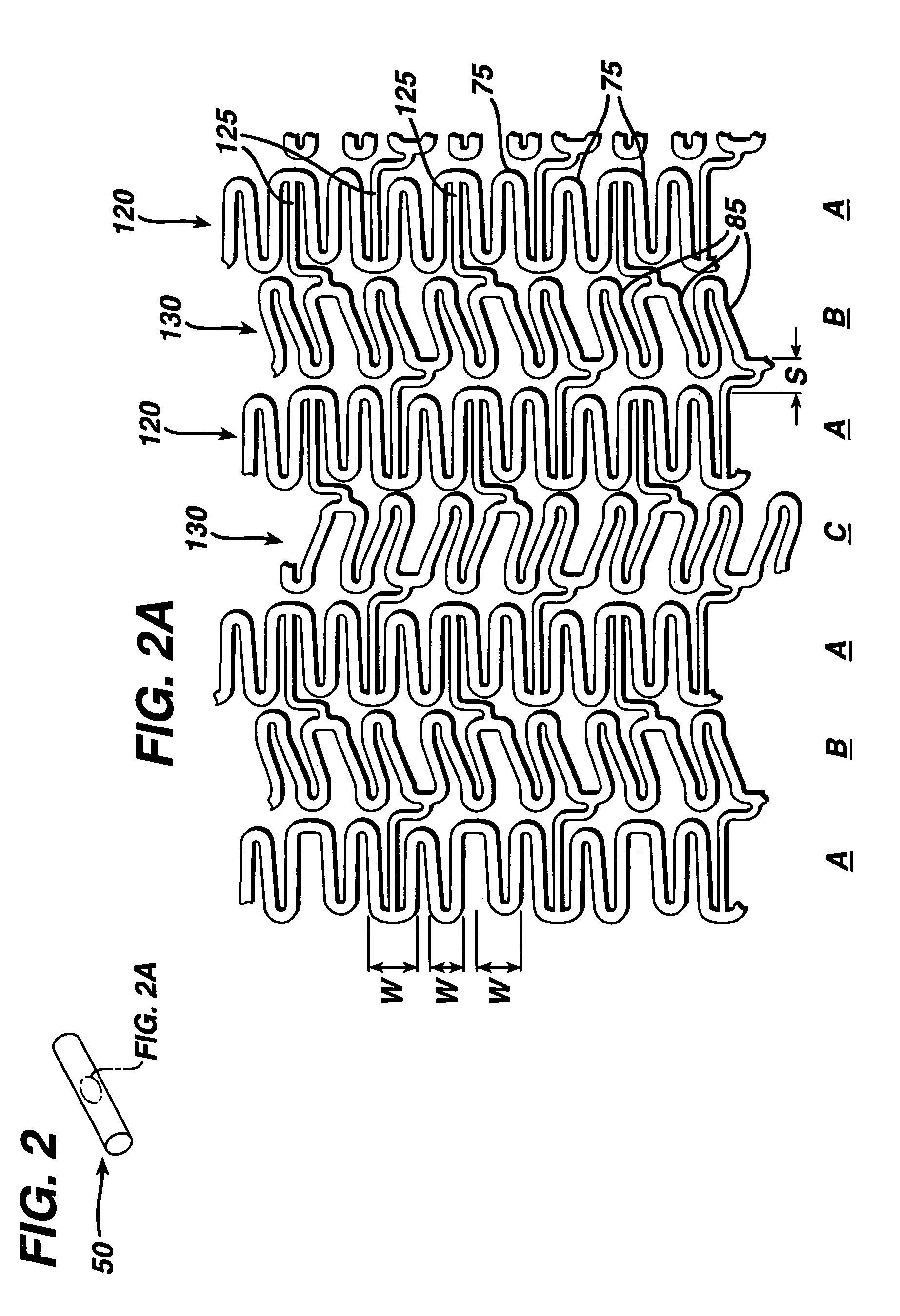Flexible stent and method of manufacture
- Summary
- Abstract
- Description
- Claims
- Application Information
AI Technical Summary
Benefits of technology
Problems solved by technology
Method used
Image
Examples
Embodiment Construction
[0034]As can be seen in FIG. 1, there is described a cylindrical stent 10 which has a series of folded strut sections 20 connected by a series of flexible sections 30. The folded strut sections 20 comprise a generally folded strut member 25 having a pair of ends 24, 26. Each of the pair of ends 24, 26 is connected to another folded strut member 25 and also to the end of a flexible member 35. Thus, each end 34, 36 of a flexible member 35 is connected to two ends 24, 26 of a folded strut 25 section member.
[0035]Each of the folded struts 25 takes on a generally irregular pattern. On the other hand, each of the flexible sections 35 takes on a generally undulating pattern. The folded strut sections 20 wrap circumferentially around the cylindrical shape of the stent 10. Each flexible section 30 also connects to a folded strut section 20 around the circumference of the stent. It will be noticed that each adjacent flexible section 30 is positioned 180° out of phase with each other.
[0036]The...
PUM
| Property | Measurement | Unit |
|---|---|---|
| Length | aaaaa | aaaaa |
| Thickness | aaaaa | aaaaa |
| Flexibility | aaaaa | aaaaa |
Abstract
Description
Claims
Application Information
 Login to View More
Login to View More - R&D
- Intellectual Property
- Life Sciences
- Materials
- Tech Scout
- Unparalleled Data Quality
- Higher Quality Content
- 60% Fewer Hallucinations
Browse by: Latest US Patents, China's latest patents, Technical Efficacy Thesaurus, Application Domain, Technology Topic, Popular Technical Reports.
© 2025 PatSnap. All rights reserved.Legal|Privacy policy|Modern Slavery Act Transparency Statement|Sitemap|About US| Contact US: help@patsnap.com



